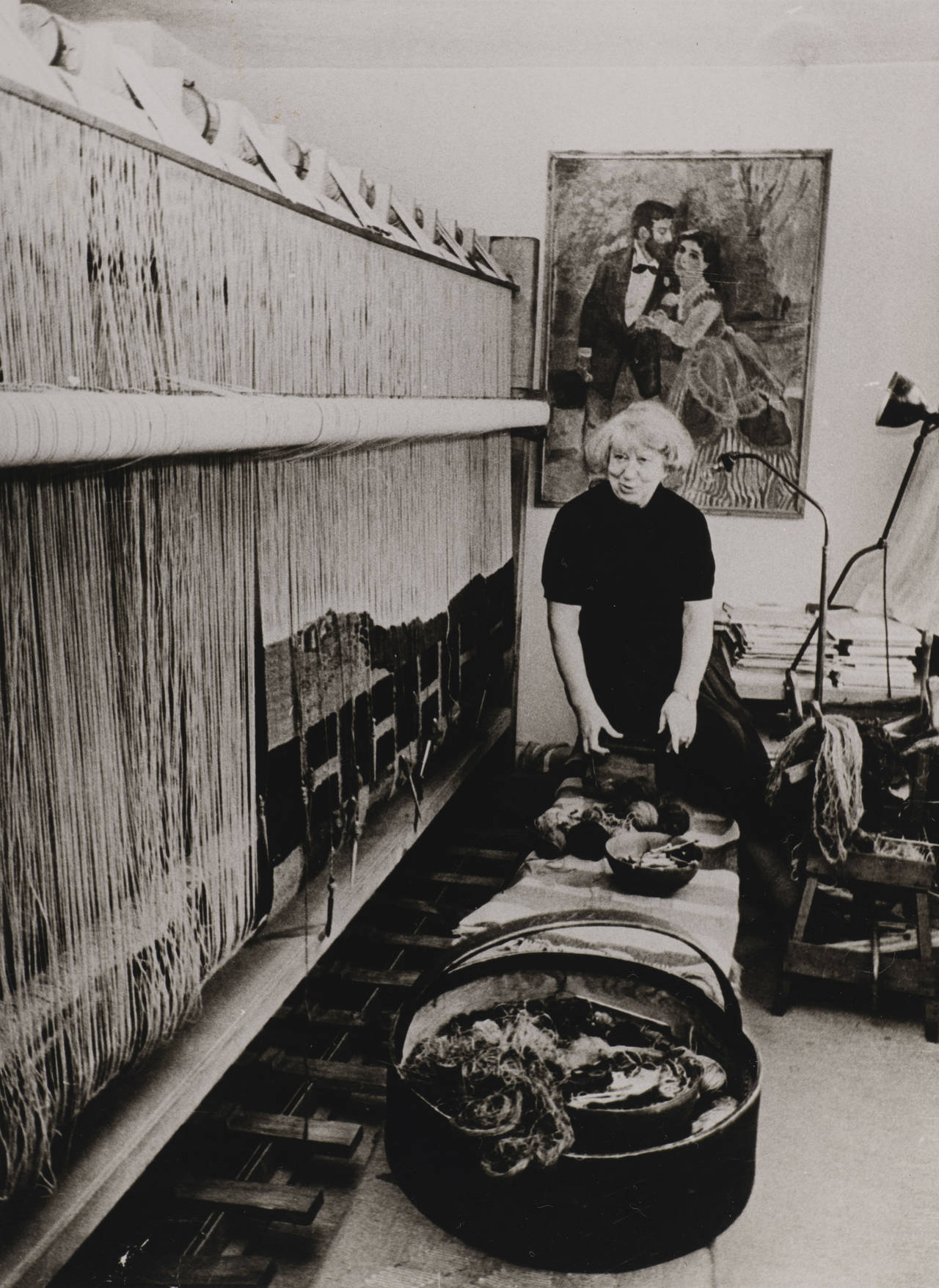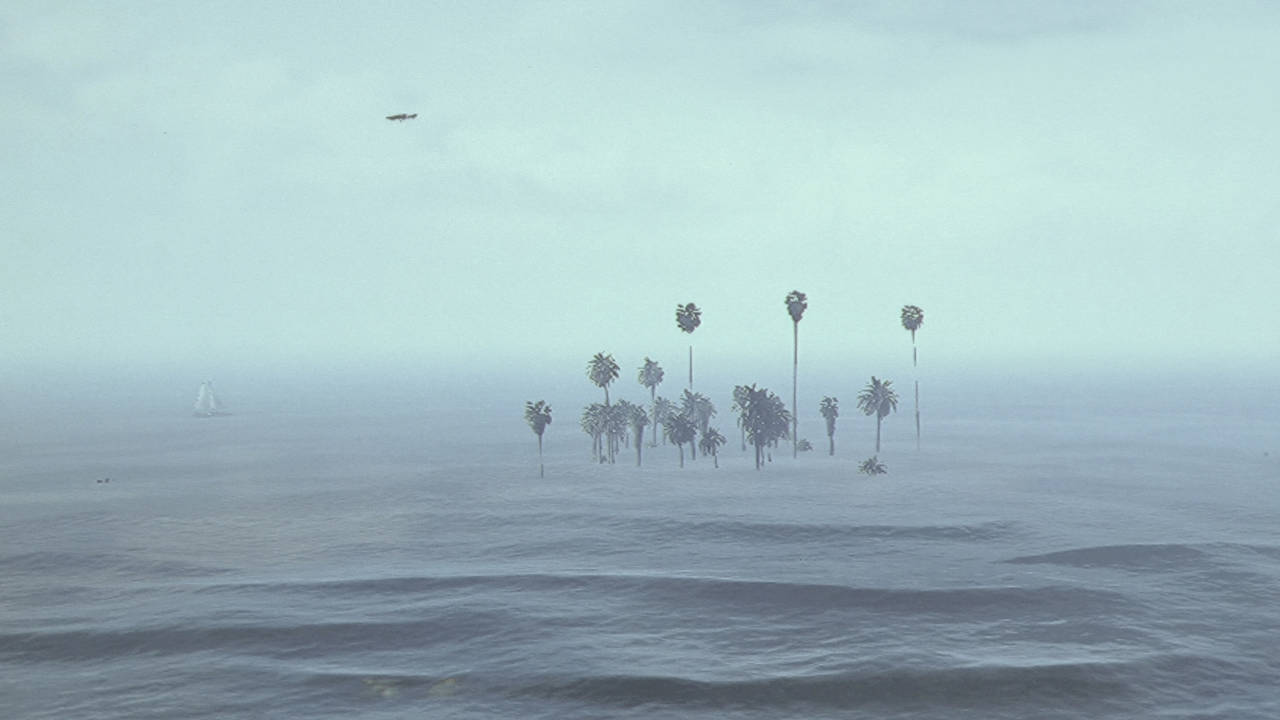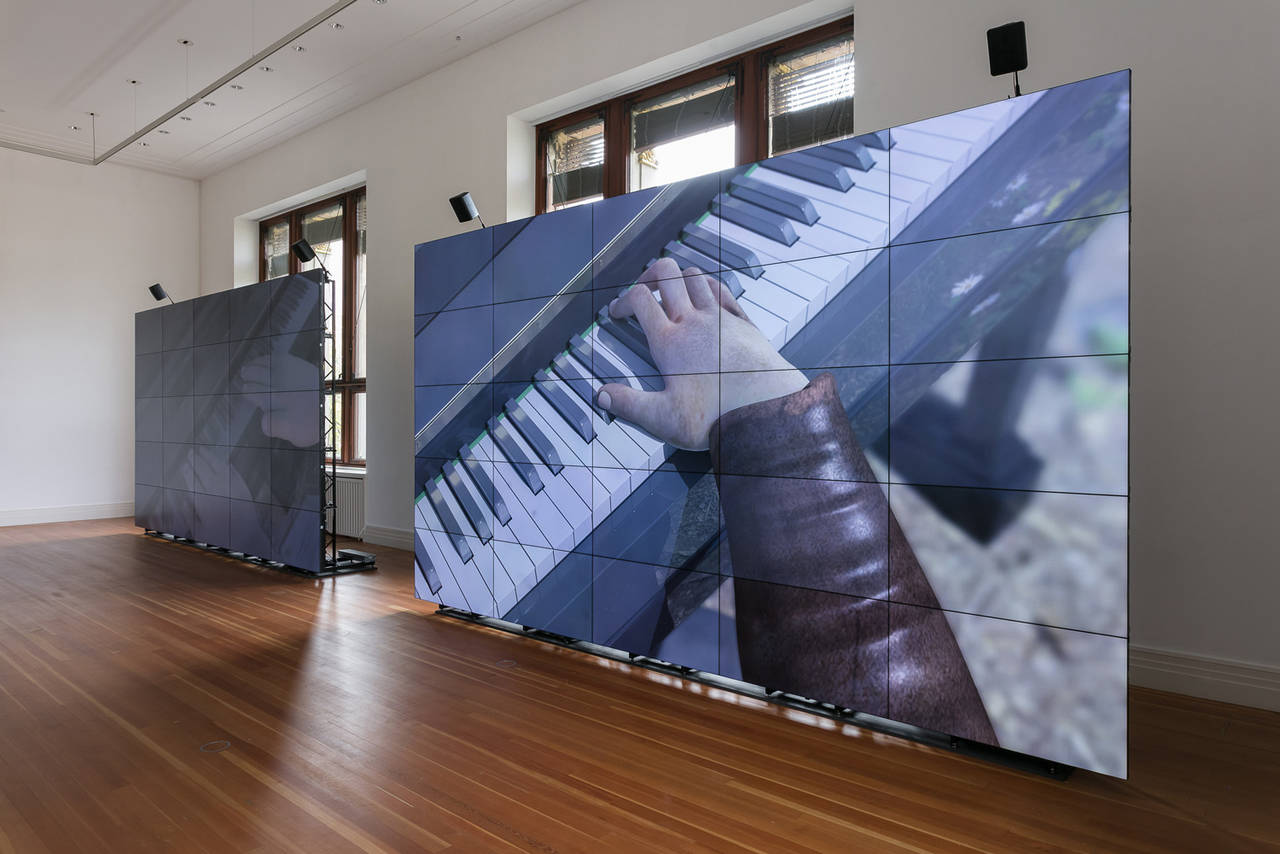Humans have always had a burning desire to watch, to observe. Now, virtual reality is opening up entirely new possibilities for the creation of immersive worlds. We present a list of pioneering virtual worlds – in art and elsewhere.
It probably all began back in the 19th century, when the big cities developed a desire to see the wider world. Shortly before 1800, therefore, the first panoramas and later dioramas, huge display cases, were built in London and Paris. We can assume they were a sign of the times: People wanted see the world – but just by looking, and without undertaking long journeys by sea. The world comes to your living room, virtually at least.
JARON LANIER, VPL RESEARCH
If you fast-forward 200 years, then a great deal has changed. The west has undergone countless media revolutions – cinema, television, Internet. Yet simulation is something people still crave. The virtual reality pioneer Jaron Lanier began to explore the field at the beginning of the 1990s. With his dreadlocks and his hacker ethos, he seemed the very epitome of the Californian hippy entrepreneur. He had worked for Atari from 1983, where he was able to get his hands on everything technology had to offer at the time. Eventually he founded his own company for research into VR technology, which generally involved wiring people up with clunky goggles, gloves and headphones. Now all you need is an Internet connection, a smartphone or a set of VR glasses. The old paradox of experiencing infinity without distance in a closely confined space still applies. This aspiration is probably far more than 200 years old – but now there are technical possibilities, paving the way for an art form whereby the observer is no longer at a distance, but rather in the middle of it all.

RAND AND ROBYN MILLER, MYST
The true innovations in virtual reality come not from art or from Silicon Valley, but rather from the world of computer games. In 1993, two brothers in the northwest of the USA created the game "Myst”: Rand Miller is a programmer and was able to hack into computers even back in his high-school days, while Robyn is the artist of the two brothers. These pastor’s sons had their players discover an island, solve puzzles and become exasperated with them. “Myst” was so complex that it made the CD-ROM essential for the first time. On top of that, it is beguilingly beautiful: Each individual image in the game seems to be the blueprint of today’s post-internet aesthetic. Harmless, like a walk in the forest, wrote Wired magazine at the time, so not actually harmless at all. It wasn’t only the enormous demands on computing power that were new, however, but also the fact that the interface was reduced to a minimum. The players were to discover this world as directly and closely as possible – and to lose themselves within it.

CAO FEI, I.MIRROR
Cao Fei is pretty familiar with what it means to lose oneself in a virtual world. After this Chinese artist had worked for some time as a successful video artist, she is said to have spent eight to ten hours a day on “Second Life”. The online roleplay actually has little to do with virtual reality, but nevertheless promises a doubling of reality, simply one that is more colorful, with more possibilities, indeed downright better. In short, a kind of psychedelic roleplay world in which the players have almost unlimited possibilities to shape things as they want – most importantly themselves. Cao recognized these possibilities and had her avatar China Tracy act in the three-part series “i.mirror” (2007). “Second Life” no longer exists, but the film is still available. Incidentally, the artist also designed the BMW Art Car, which was presented at this year’s Art Basel. The car cannot be seen with the naked eye, so must be viewed through the lens of an iPad camera. Thus Cao Fei has reached the realms of augmented reality.

MARK FARID, SEEING I
Part of the classic “job description” of a performance artist is putting oneself in situations that nobody else would willingly end up in. That’s something Mark Farid also aims to do – if his crowdfunding campaign works. Since 2014 he has been planning to become somebody else for one month by means of virtual reality. The sensory data – i.e. visual and auditory – will come from a volunteer who will wear a pair of glasses that incorporate a camera, while Farid will wear VR goggles. While some are concerned about the artist’s mental health, others are convinced that this VR experience will be merely a poor imitation of a computer game, as the technology has long been put to use with much greater efficiency in the gaming world. Behind the project, however, lies a utopian idea, namely that of empathy. After all, if identity is not bound to one particular body but can be learned, then people can also learn to empathize with others. Perhaps this idea is in itself enough, because Farid poses a fundamental question: Is human awareness bound to one body – or can we learn to be somebody different?

OFFENBACH UNIVERSITY OF ART AND DESIGN, SENTIMENT SOLUTIONS
[Translate to English:]
A little of the curiosity of the 19th century still remains, particularly in the art world. Tours of art colleges are often also presented like a diorama – one that displays the abilities of the students. It is therefore only logical that at some point somebody would show a virtual reality tour. The class under Britta Thie — Professor of Performance at Offenbach University of Art and Design since the winter semester of 2016-7 – has done just that, for example. The inspiration behind this was the work “Hope” (link: newscenario.net/hope/) by the artists’ collective new scenario (Tilman Hornig and Paul Barsch) from 2016. Both artists also provided conceptual support in Offenbach. The library is a jungle of houseplants, while on the stairs a rite of initiation into a technology sect is taking place. Thus every room tells its own story here. Viewers can click on the individual works, and the group exhibition may get them thinking about the relationship of individuals in the digital space – since all the artists are also actors in the virtual environment. One is constantly on the hunt for new indications and for how things proceed, so the feeling created is very similar to that in “Myst”. If it seems that something has come full circle here, then it’s certainly no coincidence. The virtual University of Art and Design, however, is anything but deserted.

“People who weave view the world differently”
Like the virtual world, weaving resembles a binary system, says Prof. Birgit Schneider. A conversation about textiles as precursors of digital codes...

When the crowd determines the individual
Crowd movements can easily be simulated by algorithms. How this influences our real life, is shown in the film “Transformation Scenario” at the coming...

How Virtual Reality conquers the art world
Ever danced with a wolf? Artist duo Djurberg & Berg make it possible with their first virtual reality work. They are part of a young generation of...

When computer games become reality
A tropical landscape turns out to be the distorted world of a human avatar. In Aleksandar Radan’s film “This water gives back no images” nothing is...

Nathalie Djurberg & Hans Berg
The encounter with the films of Nathalie Djurberg and Hans Berg has something of a seduction — they immediately attract the viewer into colorful...

In the vicious circle of sadness
As part of the “Immersion” series, British artist Ed Atkins is presenting an exhibition at Martin-Gropius-Bau that addresses our ubiquitous escapism...

A walk-in diorama
These days, computer games are discussed in arts supplements. What is their appeal and how do they develop such a strong draw for people? Let’s play!

Complete dissolution
Is complete immersion in a virtual world a utopia or a dystopia? These and other questions are answered by Prof. Rupert-Kruse, immersion researcher,...

Noise interference from a distant world
An experience for all the senses: An exhibition at Kunstverein Frankfurt invites viewers to immerse themselves in virtual and constructed worlds

It’s complicated
Lauren McCarthy is an artist, programmer and lecturer in Los Angeles. In our SCHIRN MAG interview she talks about the allure of being watched and the...

